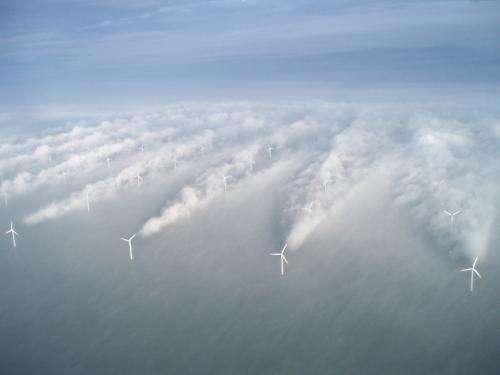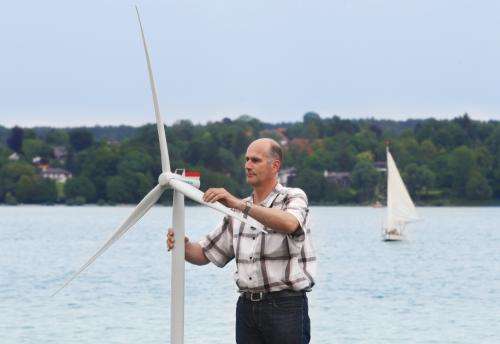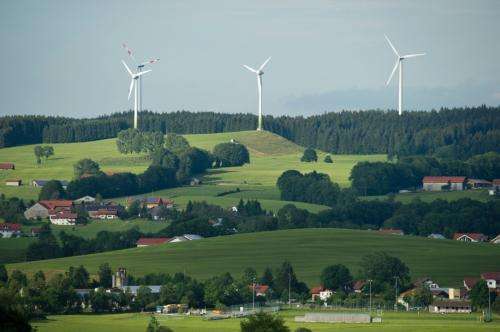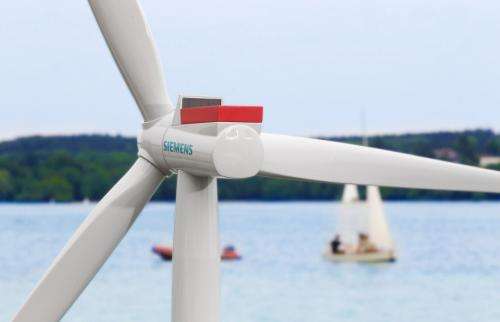Optimizing how wind turbines work with machine learning

Machine learning helps make complex systems more efficient. Regardless of whether the systems in question are steel mills or gas turbines, they can learn from collected data, detect regular patterns, and optimize their own operations. Researchers at Siemens are demonstrating that continuous learning also allows wind turbines to increase their electricity output.
In his free time Volkmar Sterzing likes to work as a sailing instructor on Lake Starnberg south of Munich. A specialist in machine learning at Siemens Corporate Technology, Sterzing says that: "There are definitely parallels between sailing instruction and the machine learning process we use to optimize products." Whereas his pupils learn to understand the power of the wind and to intuitively know when and how they have to set their sails, Sterzing studies how complex systems such as wind turbines can independently recognize regular patterns in collected data and thus learn how to optimize their operations.
Optimizing complex systems with machine learning
Siemens engineers have been studying machine learning for the past 25 years. "The associated processes offer many possibilities for making systems smarter and more efficient," says Professor Thomas Runkler, an expert for machine learning at Siemens Corporate Technology in Munich and a professor at the Technical University of Munich. "Siemens has used machine learning to optimize industrial facilities such as steel mills and gas turbines." Machine learning can also be used to reliably forecast the prices of energy and raw materials or to predict energy demand in entire regions.
Neural networks: Essential for machine learning

A precondition for machine learning is the availability of computer systems that can learn from vast quantities of data and optimize their behavior accordingly. Among other things, Sterzing is studying how machine learning enables wind turbines to adjust themselves to fluctuating wind and weather conditions in order to increase their electricity output.
"Wind turbines optimize their output by comparing their operating data with weather data," says Sterzing. Sensors in and on such systems routinely record data regarding the direction and speed of the wind, temperatures, electric currents and voltages, as well as vibrations produced by major components such as the generator and the rotor blades. "Previously these sensor parameters were used only for remote maintenance and service diagnostics. But now they are also helping wind turbines generate more electricity," says Sterzing. Using neural networks, researchers at Siemens spent four years analyzing and modeling various dependencies and interrelationships. Neural networks are the key to successful machine learning in wind turbines. "Neural networks are computer models whose operations are similar to those of the human brain," explains Sterzing. They learn from examples, recognize patterns, and use past measurement data to make forecasts and ideal models regarding the future behavior of complex systems.
This is particularly applicable to wind turbines. On the basis of past measurement data, software calculates the optimal settings for various weather scenarios that involve a variety of factors such as sunshine duration, hazy conditions, and thunderstorms. The data is transmitted to the wind turbines' control units, which take it into account from then on as they adjust the functions. If familiar wind conditions arise, the control units immediately use the optimal settings that were ascertained as a result of machine learning. This can result in the adjustment of rotor blade angles, for example. "As a result, turbines become more and more efficient and produce more energy," says Sterzing.
But why should we optimize wind turbines? The answer is simple: Wind turbines don't always run at full capacity. They deliver far less energy than they potentially could – especially when the wind is weak or only blowing at half strength. "We want to increase their performance by a few percentage points in precisely these situations," Sterzing explains. This could further reduce the costs of wind energy in the future, and that's an important consideration, given that wind turbines are becoming more and more competitive compared to conventional energy generation systems.
The ALICE research project

In the ALICE (Autonomous Learning in Complex Environments) research project, experts from Siemens, IdaLab GmbH, and the Machine Learning group at the Technical University of Berlin collected information on how to optimize wind turbines. The project, which was funded by Germany's Ministry of Education and Research, was completed in June 2014. Wind turbines demonstrated their learning abilities in field tests that were held as part of the project. In 2013 tests were conducted with up to eight turbines at two small offshore and onshore wind farms in Spain and Sweden. The wind power systems learned by using their own measurement data and achieved a noticeable increase in efficiency. However, it is still not quite clear by how much the efficiency increased, so additional larger-scale research projects are needed.

"Fall away!," Sterzing suddenly shouts out toward the lake. One of his pupils is sailing too close to the wind to reach the windward practice buoy. Even though he is sailing a shorter distance than the other pupils, it nonetheless takes him longer to get to the buoy because he is traveling more slowly. "The kids are learning how their boats behave in different weather conditions, and what they have to do in response—and our wind turbines are doing something similar," Sterzing says.
Sterzing looks out over the lake. With great satisfaction, he observes that one of his pupils is now among the first to sail around the windward buoy. "Learning pays off," he says with a grin, thinking not only of sailing but also of Siemens. After all, Volkmar Sterzing's hobby is very closely connected to his profession.

Provided by Siemens





















